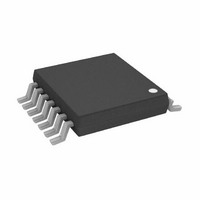OP491GRUZ-REEL Analog Devices Inc, OP491GRUZ-REEL Datasheet - Page 18

OP491GRUZ-REEL
Manufacturer Part Number
OP491GRUZ-REEL
Description
IC OPAMP GP R-R 3MHZ 14TSSOP
Manufacturer
Analog Devices Inc
Datasheet
1.OP491GRUZ-REEL.pdf
(24 pages)
Specifications of OP491GRUZ-REEL
Slew Rate
0.5 V/µs
Amplifier Type
General Purpose
Number Of Circuits
4
Output Type
Rail-to-Rail
Gain Bandwidth Product
3MHz
Current - Input Bias
30nA
Voltage - Input Offset
80µV
Current - Supply
260µA
Current - Output / Channel
16mA
Voltage - Supply, Single/dual (±)
2.7 V ~ 12 V, ±1.35 V ~ 6 V
Operating Temperature
-40°C ~ 125°C
Mounting Type
Surface Mount
Package / Case
14-TSSOP
Op Amp Type
Low Power
No. Of Amplifiers
4
Bandwidth
3MHz
Supply Voltage Range
2.7V To 12V
Amplifier Case Style
TSSOP
No. Of Pins
14
Lead Free Status / RoHS Status
Lead free / RoHS Compliant
-3db Bandwidth
-
Lead Free Status / RoHS Status
Lead free / RoHS Compliant, Lead free / RoHS Compliant
Other names
OP491GRUZ-REEL
OP491GRUZ-REELTR
OP491GRUZ-REELTR
Available stocks
Company
Part Number
Manufacturer
Quantity
Price
Company:
Part Number:
OP491GRUZ-REEL
Manufacturer:
IR
Quantity:
1 500
Part Number:
OP491GRUZ-REEL
Manufacturer:
ADI/亚德诺
Quantity:
20 000
OP191/OP291/OP491
INPUT OVERVOLTAGE PROTECTION
As with any semiconductor device, whenever the condition
exists for the input to exceed either supply voltage, check the
input overvoltage characteristic. When an overvoltage occurs,
the amplifier could be damaged depending on the voltage level
and the magnitude of the fault current. Figure 62 shows the
characteristics for the OP191 family. This graph was generated
with the power supplies at ground and a curve tracer connected
to the input. When the input voltage exceeds either supply by
more than 0.6 V, internal PN junctions energize, allowing
current to flow from the input to the supplies. As described, the
OP291/OP491 do have 5 kΩ resistors in series with each input
to help limit the current. Calculating the slope of the current vs.
voltage in the graph confirms the 5 kΩ resistor.
This input current is not inherently damaging to the device as
long as it is limited to 5 mA or less. For an input of 10 V over
the supply, the current is limited to 1.8 mA. If the voltage is
large enough to cause more than 5 mA of current to flow, then
an external series resistor should be added. The size of this
resistor is calculated by dividing the maximum overvoltage by
5 mA and subtracting the internal 5 kΩ resistor. For example, if
the input voltage could reach 100 V, the external resistor should
be (100 V/5 mA) − 5 kΩ = 15 kΩ. This resistance should be
placed in series with either or both inputs if they are subjected
to the overvoltages.
20V p-p
V
IN
–10V
Figure 62. Input Overvoltage Characteristics
3
2
OP291
+
–
+5V
–5V
–5V
8
1/2
4
+2mA
+1mA
–1mA
–2mA
1
I
IN
V
+5V
OUT
+10V
100
0%
Figure 64. Output Voltage Phase Reversal Behavior
90
10
V
IN
TIME (200µs/DIV)
Rev. E | Page 18 of 24
OUTPUT VOLTAGE PHASE REVERSAL
Some operational amplifiers designed for single-supply
operation exhibit an output voltage phase reversal when their
inputs are driven beyond their useful common-mode range.
Typically, for single-supply bipolar op amps, the negative supply
determines the lower limit of their common-mode range.
With these devices, external clamping diodes with the anode
connected to ground and the cathode to the inputs prevent
input signal excursions from exceeding the device’s negative
supply (that is, GND), preventing a condition that could cause
the output voltage to change phase. JFET input amplifiers can
also exhibit phase reversal, and, if so, a series input resistor is
usually required to prevent it.
The OP191 is free from reasonable input voltage range
restrictions due to its novel input structure. In fact, the input
signal can exceed the supply voltage by a significant amount
without causing damage to the device. As shown in Figure 64,
the OP191 family can safely handle a 20 V p-p input signal on
±5 V supplies without exhibiting any sign of output voltage
phase reversal or other anomalous behavior. Thus, no external
clamping diodes are required.
OVERDRIVE RECOVERY
The overdrive recovery time of an operational amplifier is the
time required for the output voltage to recover to its linear
region from a saturated condition. This recovery time is
important in applications where the amplifier must recover
quickly after a large transient event, such as a comparator. The
circuit shown in Figure 63 was used to evaluate the OPx91
overdrive recovery time. The OPx91 takes approximately 8 μs to
recover from positive saturation and approximately 6.5 μs to
recover from negative saturation.
10V STEP
V
S
V
IN
Figure 63. Overdrive Recovery Time Test Circuit
= ±5V
100
0%
90
10
10kΩ
9kΩ
R1
R2
5µs
20mV
3
2
TIME (200µs/DIV)
OP291
+
–
1/2
10kΩ
R3
1
20mV
5µs
V
OUT














